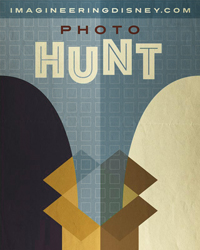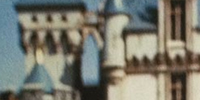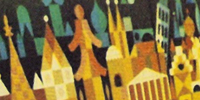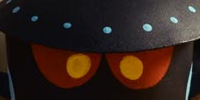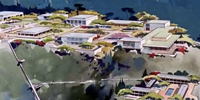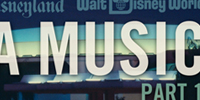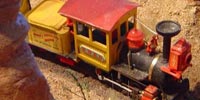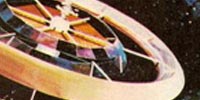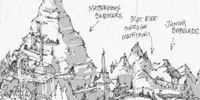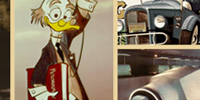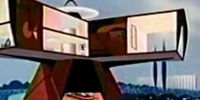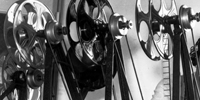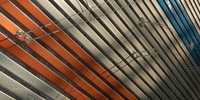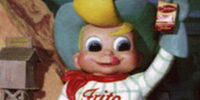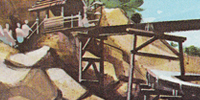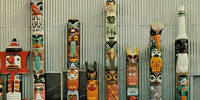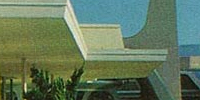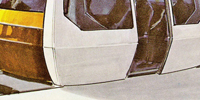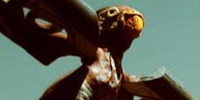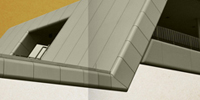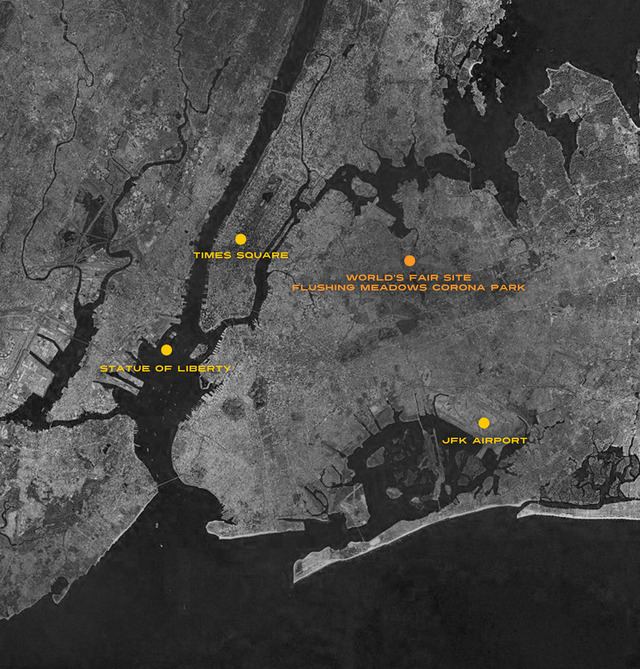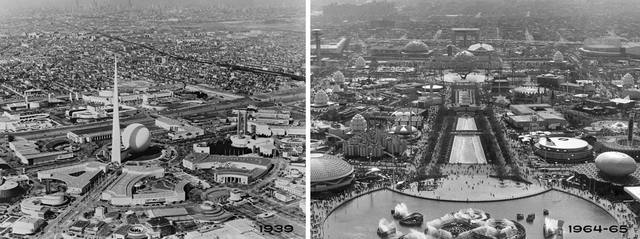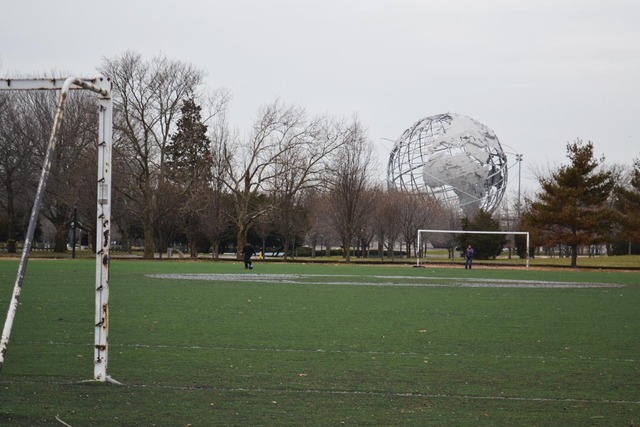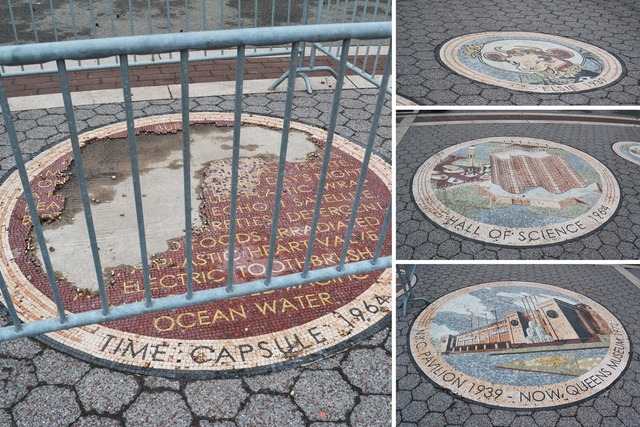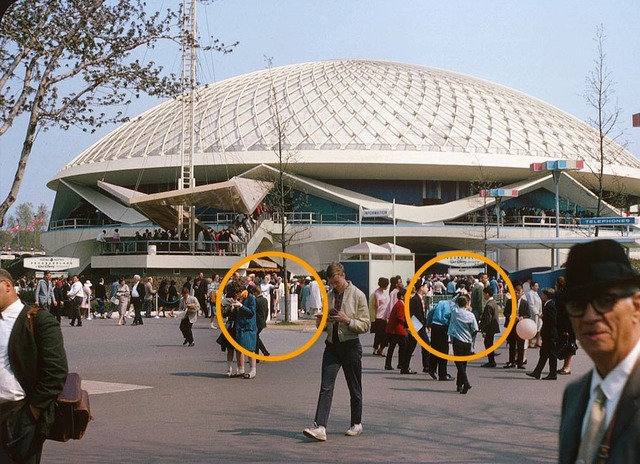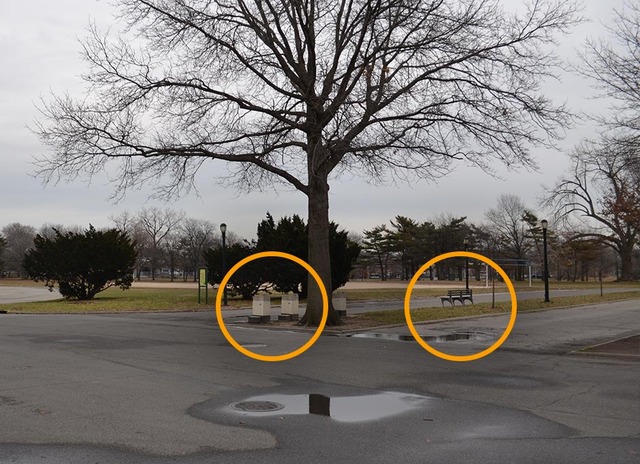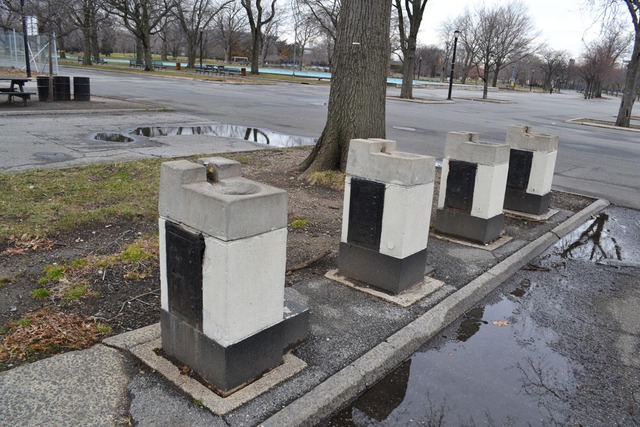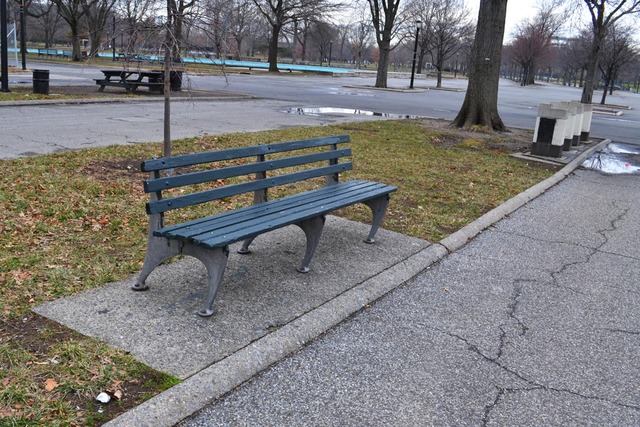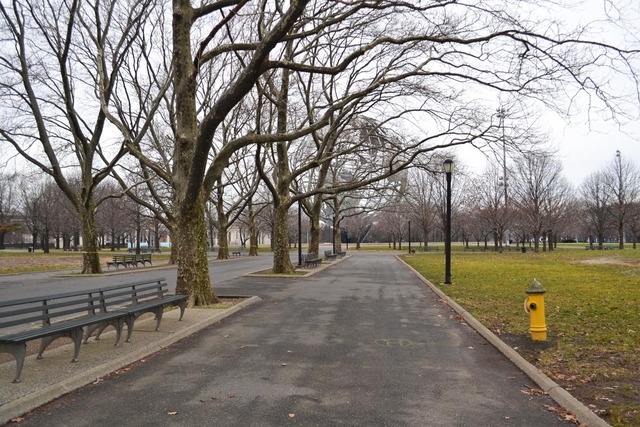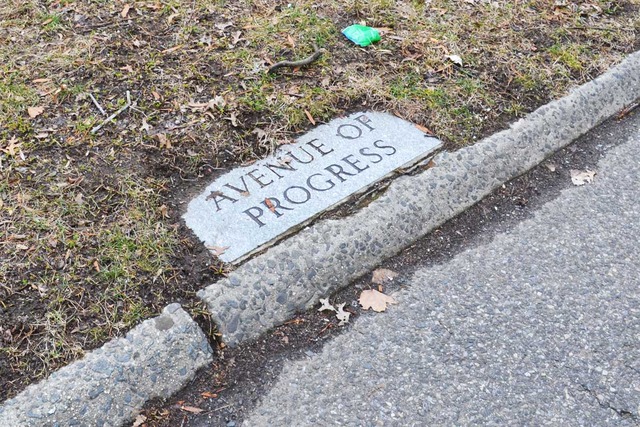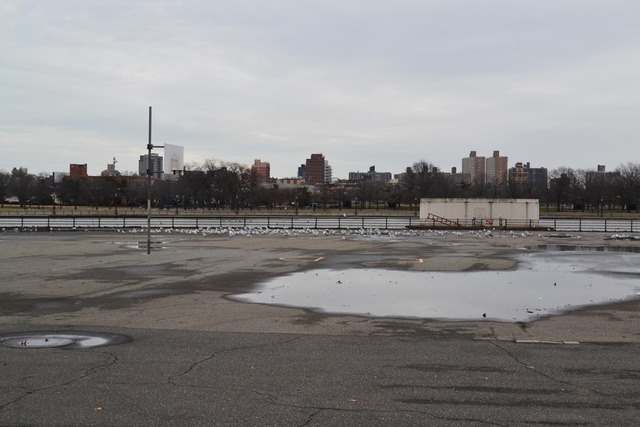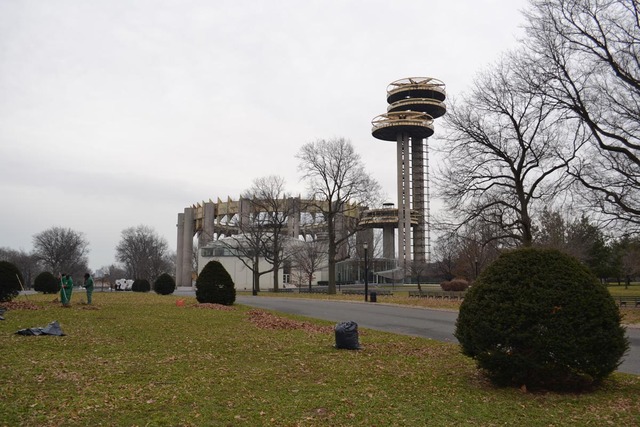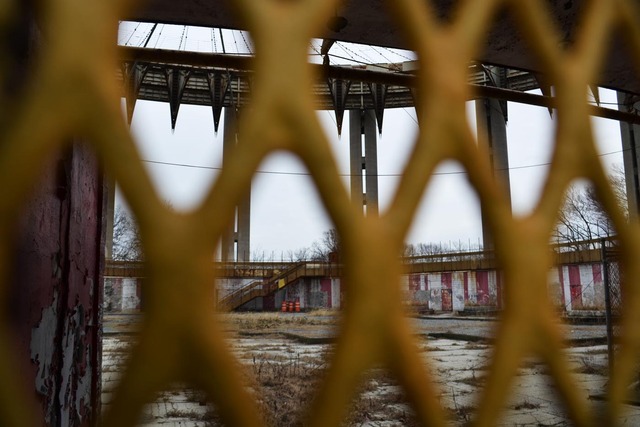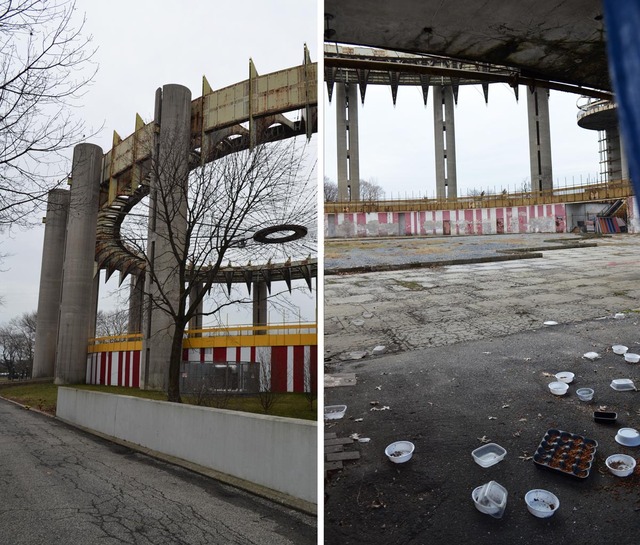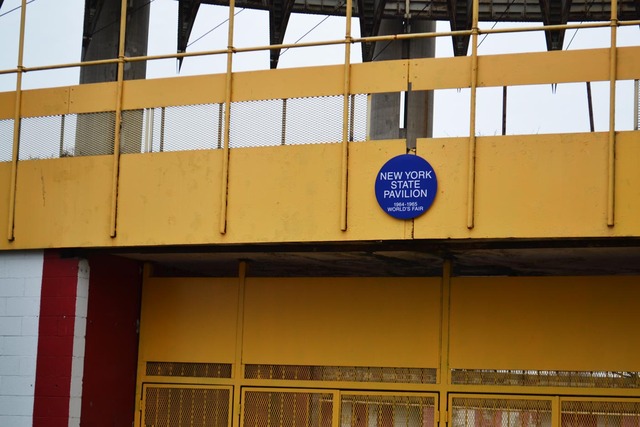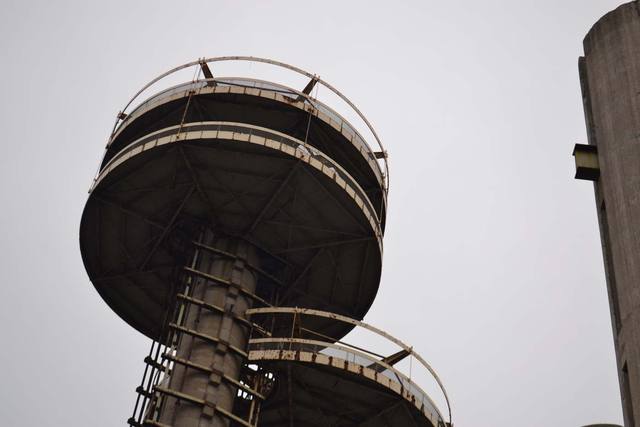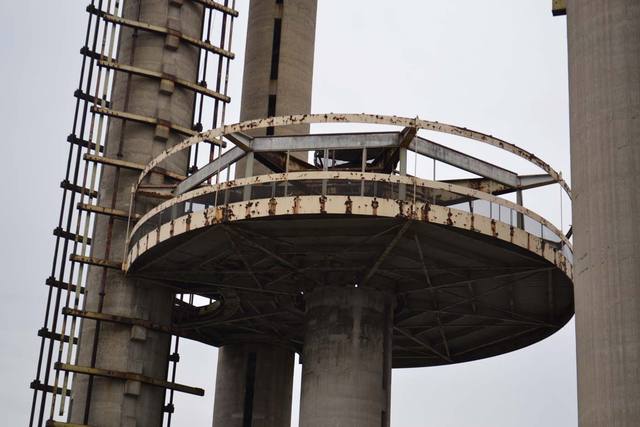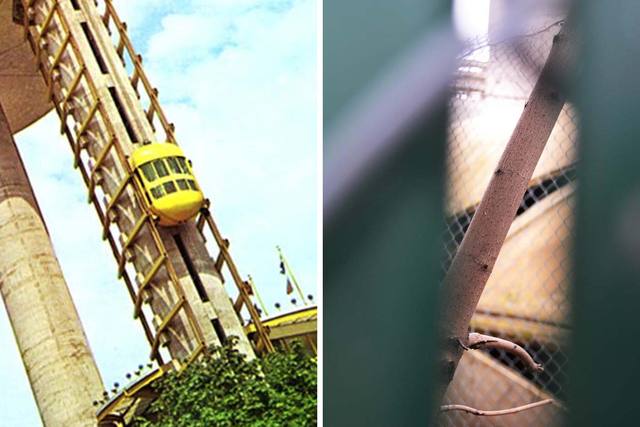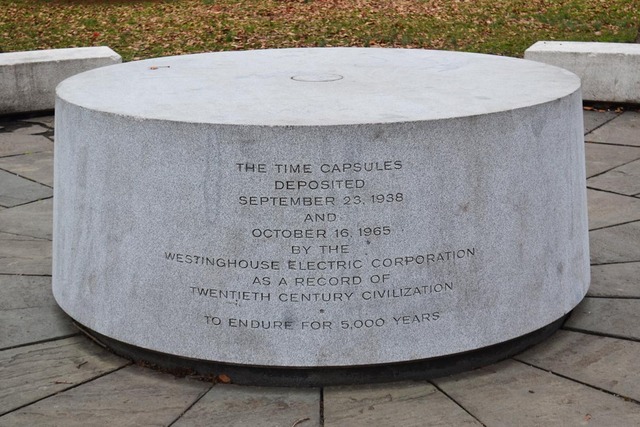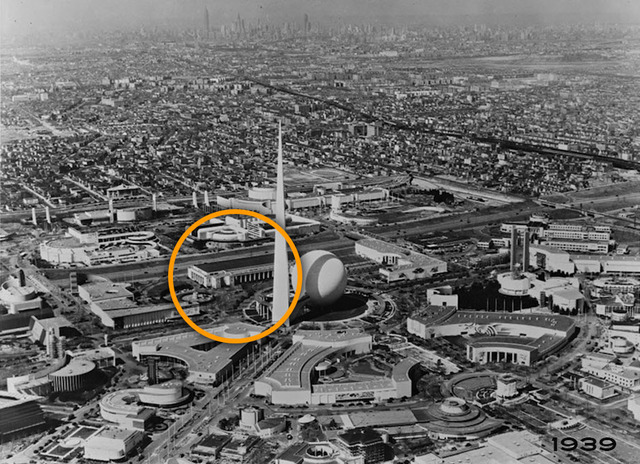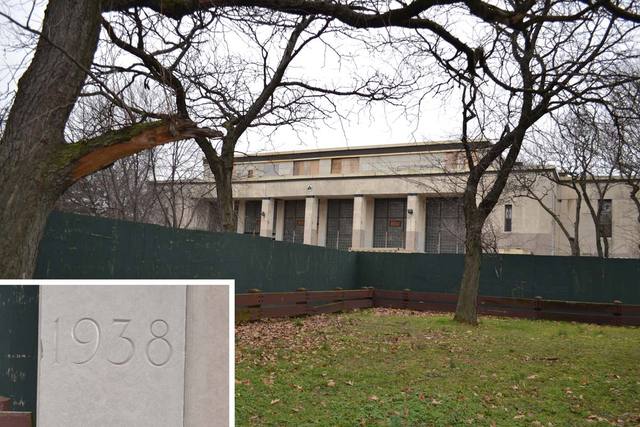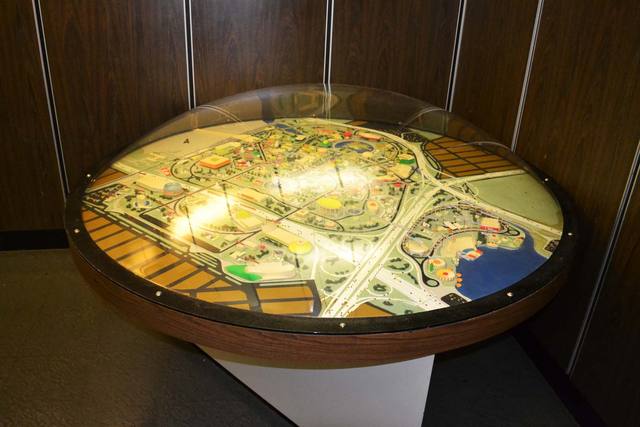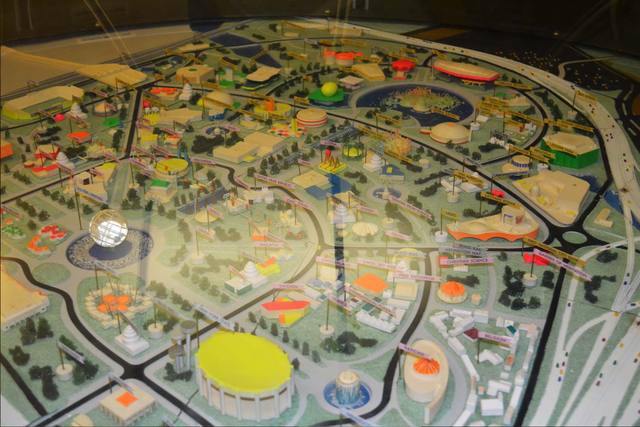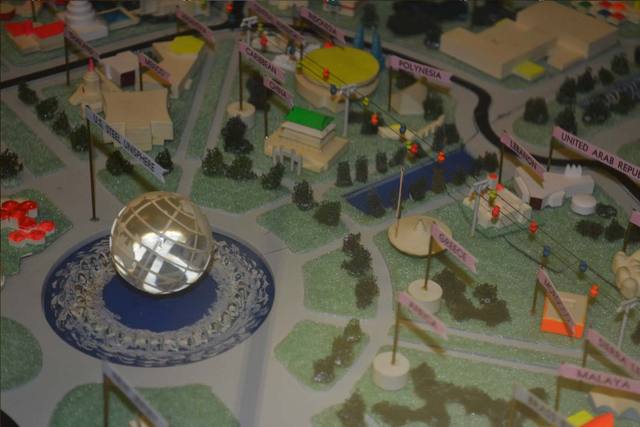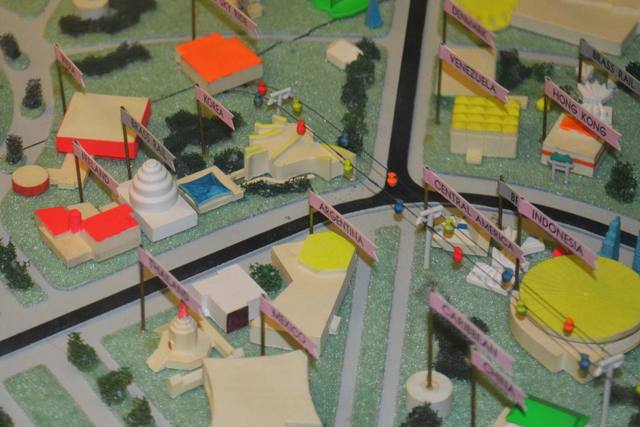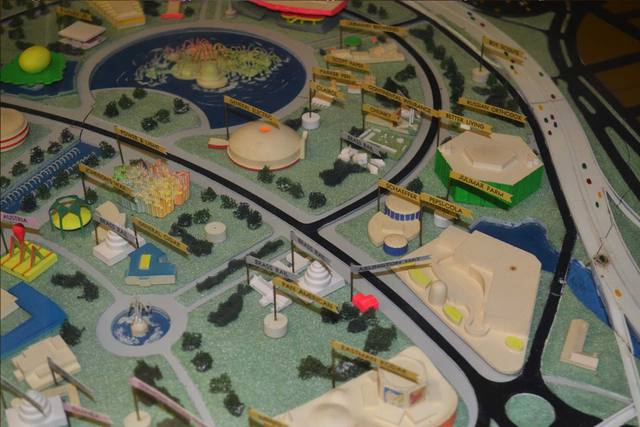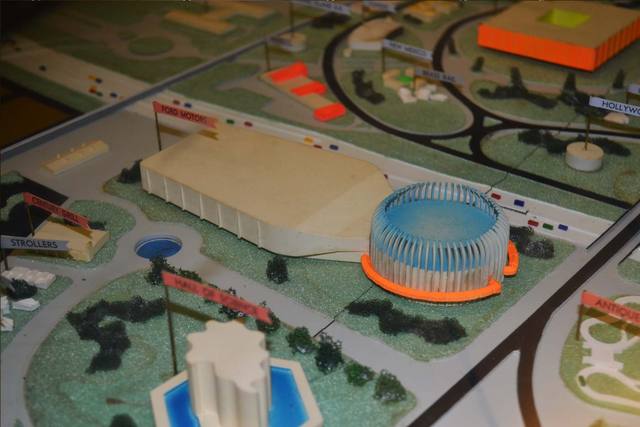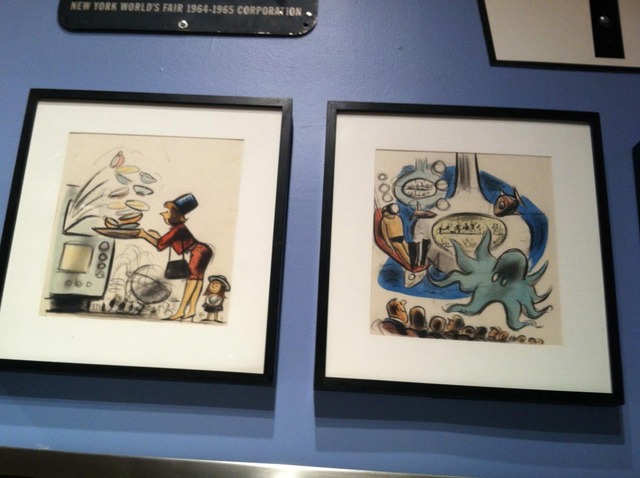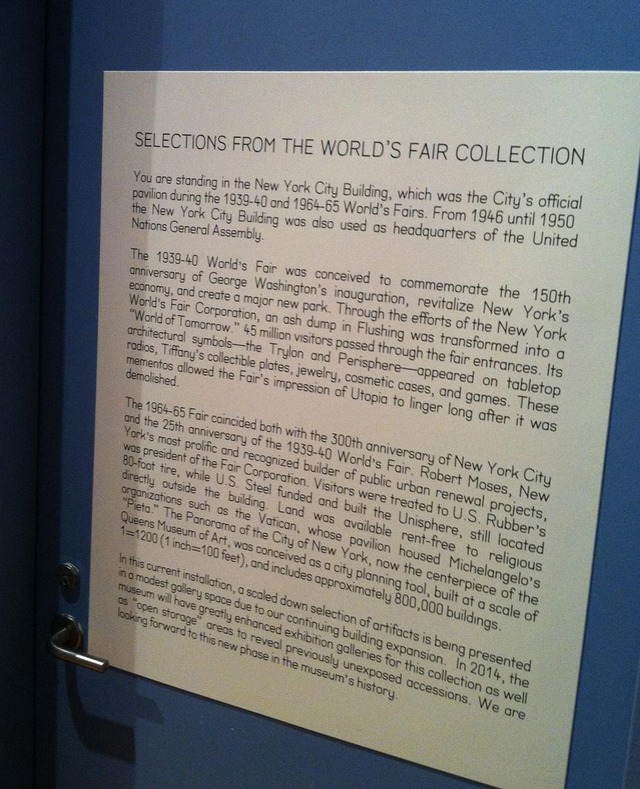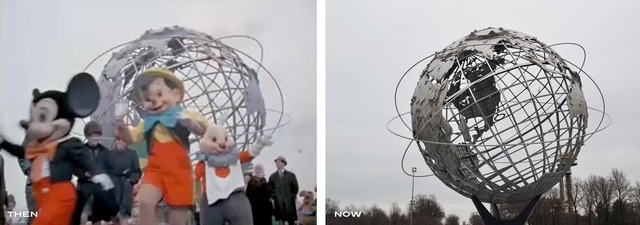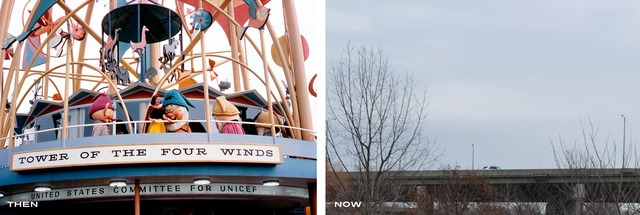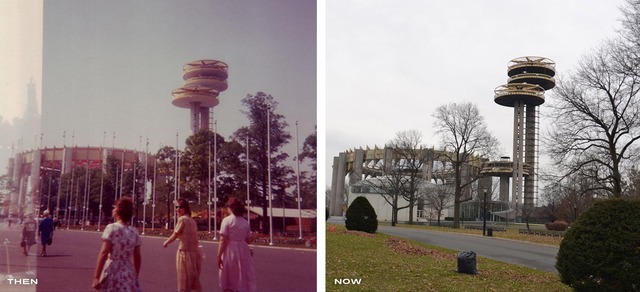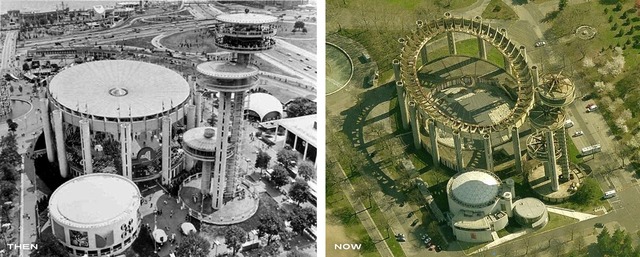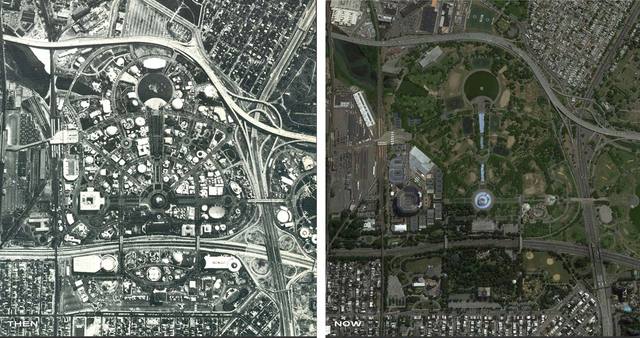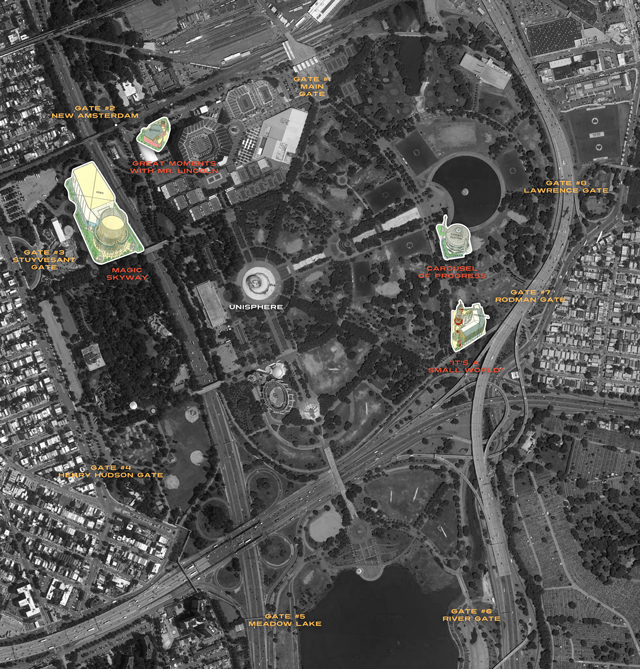What Remains of the 1964-65 New York World's Fair?
 Mitch
Mitch In my last post I shared some Then and Now photos from my visit to the site of the 1964-65 New York World's Fair. In this post I share a few things from the World's Fair that still remain on the site today.
The site is now a New York City public park called Flushing Meadows Corona Park.
The park located in Queens was once the site of the Corona Ash Dumps which were characterized as "a valley of ashes" in F. Scott Fitzgerald's The Great Gatsby. In the 1930s the dumps were cleaned up to make way for the 1939 New York World's Fair. Two World's Fairs on one site!
I was in Manhattan for the first time in a long time and decided to take the 7 train out to Flushing Meadows. The experience of arriving at the nearby train stop and seeing the iconic Unisphere is incredible. It's like arriving at Epcot and seeing Spaceship Earth. Once inside the park it's easy to spot the large sphere from almost anywhere.
The water pools from the fair still stand today. I imagine when it's not Winter they are actually full of water. Here we see the "Fountains of the Fairs".
I couldn't help but wonder if all the joggers, tennis players, and soccer players at the park knew the historical significance of the land they were enjoying.
These beautiful tile mosaics were exciting to discover. They have clearly seen better days. Turns out they aren't all that old. I believe they were added in the late 90s.
Take a close look at what I've circled here in front of General Electric's Progressland pavilion (home to Carousel of Progress). Drinking fountains and benches.
Some of them still stand today!
Several street markers still grace the curbing of the streets. Many of the World's Fair streets and their names remain unchanged.
"Court of the Universe" and the "Pool of Industry".
The most prominent structure from the fair that still remains is the New York State pavilion. It may look familiar if you've seen Men In Black or Iron Man 2.
We see here how grand the pavilion looked during the fair.
Today it's closed to the public, rusted, full of weeds, and of course all of the colorful plexiglass tent panels are long-gone.
Apparently a bunch of cats have taken over. Distant cousins of the wild cats that live in Disneyland?
Just inside one of this gates I spotted this little sign. There's been much debate about what to do with the structure.
The towers once offered World's Fair guests some amazing views of the fair grounds. Guest accessed the platforms via two "Skystreak" exterior elevators.
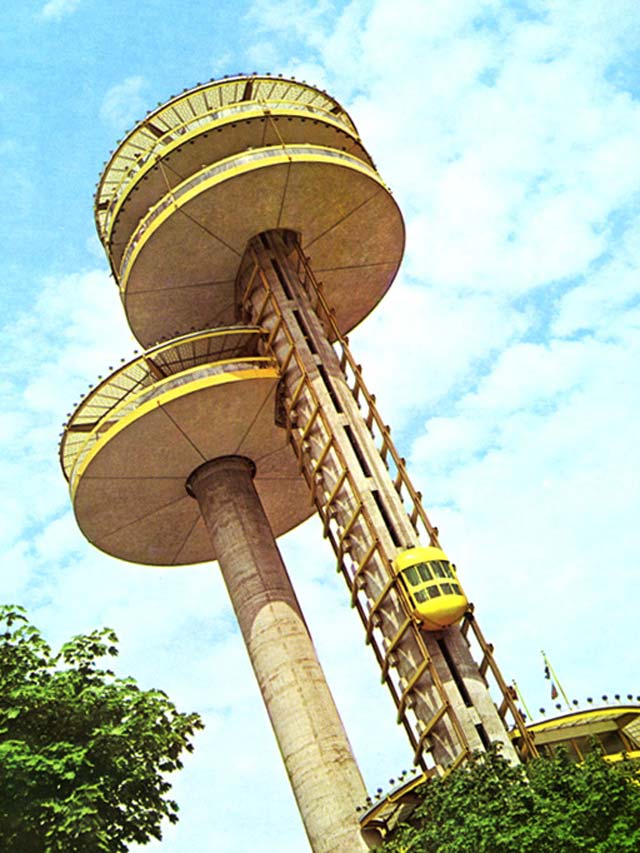
We learn the following from Queens Crap blog:
"After the fair ended in 1965, the steel-and-glass capsules were left at the mercy of decay and vandals - as one rusted away in a pit beneath the pavilion, and the other was stuck mid-rise at 150 feet. The city Parks Department stripped the pods off their cables in July 2008, fearing parts might blow off in strong winds. At the time, both were largely intact."
Sadly they are not "largely intact" anymore. I got a small glimpse between gaps in the fence at what remains of at least one of the elevators.
Across the path the Westinghouse Electric & Manufacturing Company buried a time capsule as part of their in exhibit it 1965. And get this. They buried a similar time capsule just ten feet away in 1938. Both were placed 50 feet into the ground.
A short walk away another piece of both fairs still stands. The building that is now the Queens Museum of Art was built to house the New York City Pavilion at the 1939 World's Fair. The building was home to the New York City Pavilion once again at the 1964-64 World's Fair.
I must thank @EPCOTExlorer for insisting I tour the Queens Museum of Art. I came upon a sign saying the museum was closed to the public that day and only open to school groups. I entered a side door to ask if I could use the restroom. The security guard said the main-level restrooms were closed due to some museum renovations. He was nice enough to point to an old-looking elevator and sent me to the upper-level restrooms. Inside this large elevator I was thrilled to find this model of the 1964-65 New York World's Fair.
I took only a couple photos. I figured I'd quickly use the restroom and make my way out of the closed museum without overstaying my welcome.
But of course I couldn't help myself. After returning to the elevator I decided to photograph the entire model the best I could.
Cute little Sky Ride.
General Electric's Carousel of Progress there in the center and Pepsi-Cola's It's a Small World on the lower right.
Ford Pavilion and its Magic Skyway.
State of Illinois and Great Moments With Mr. Lincoln.
I then decided to photograph something else that had caught my eye off in the corner. A small collection of World's Fair memorabilia. I think I'll recreate that metal directional sign for my office.
This wonderful concept art (framed on the right) shows part of General Motor's "Futurama" model of a futuristic city. Though none of this was built by Disney, it's often confused with what would later debut at Disneyland as the "Progress City" model. What's the dishwasher thing on the left? I don't know.
More info about the small museum exhibit.
On my way out I snuck into a large room to see something breathtaking. I had seen photos of this large panorama many times but didn't realize it belonged to the museum in which I was wandering. When I finally made it back to that side door I thanked the security guard and said, "I must pay admission because I enjoyed far too much of your museum." He said, "Not necessary but I can't let you leave without seeing the best part." He took me to a door that led to a much closer view of the New York City panorama. Could the model in the elevator be connected to this panorama?
Needless to say, the entire experience was somewhat sacred for this student of distant Disney history. I'm sure many little remnants of the World's Fair and Walt Disney's contribution to the fair remain at Flushing Meadows. Go find them!
Related posts:
THEN AND NOW: 1964-65 New York World's Fair
Tomorrowland '67 [Part 3]
Carousel of Progress Like You’ve Never Seen It
 Carousel of Progress,
Carousel of Progress,  World's Fair
World's Fair 

